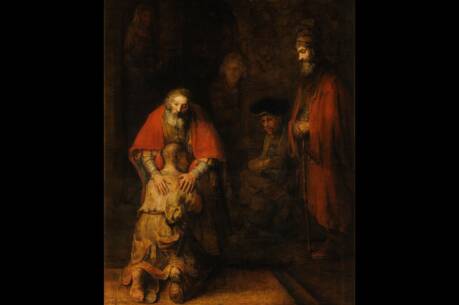Words to Live By; A Light to Guide
The Christmas/Epiphany cycle offers a series of windows into the mystery of the birth and manifestation of Jesus, rather than a sequential tour through the infancy narratives. The already rich fare of the Christmas season was expanded within the last century by the addition of the feast of the Holy Family, now celebrated on the first Sunday after Christmas. Multiple themes characterize the readings: a woman dedicating her child to God; a young Jesus in the temple astounding learned teachers, while perplexing his parents as he follows his Father’s will. The reading from 1 John points to a quality of love that can sustain family life.
The first reading could better be called Hannah’s Story, since it is told from her perspective and unfolds from her initiative (I recommend reading the whole of 1 Sam. 1:1-2:11). As in the story of Mary over a millennium later, the conception and birth of a son occurs through God’s intervention; but after the birth, when Hannah’s husband Elkanah was going up to offer sacrifice, Hannah tells him that she will wait to go up later, so she can dedicate the child to God. In a response that could well guide family life today, he says, Do what you think best. She then goes up to Shiloh with a sacrifice, which Elkanah enacts, but then approaches Eli the priest and says, I am the woman who stood near you here, praying to the Lord.... Now I in turn give him to the Lord as long as he lives. She then prays a canticle that begins like Mary’s, My heart exults in the Lord. Hannah is a parade example of an assembly of women in the Hebrew Bible whose faith and courage make possible the unfolding of salvation history.
Today’s Gospel has been variously titled The Finding of the Boy Jesus in the Temple, The Boy Jesus in Jerusalem and Jesus Among the Teachers. The story accents three aspects of Luke’s theology. The family of Jesus are faithful and observant Jews, who annually make the Passover pilgrimage to Jerusalem; Jesus is himself a teacher, most likely expounding the Scriptures that will characterize his public life; and his commitment to God here transcends human expectation and Jewish piety. The center of the narrative is really the loss and finding of Jesus and the dialogue with Mary, who, like Hannah, speaks instead of the father; yet she expresses the anxiety of both of them. Jesus responds with a double-meaning phrase that can be translated, I must be in my Father’s house, or I must be about my Father’s business. The Gospel concludes with a twofold reaction: Jesus returns with Mary and Joseph and grows in wisdom, age and favor [with God], while Mary, as she did earlier, keeps these things in her heart (2:19).
The readings offer a realistic challenge to family life today, and not simply by emphasizing the virtues of fidelity to God, obedience and growth in wisdom. Every parent is faced in a different manner with the surprise that Mary feels. As children mature after long years of love and guidance, the emerging adults begin to forge their own paths. Like Mary and Joseph, parents often cannot understand what they say, and yet Jesus’ journey to self-understanding begun at Jerusalem concludes with a return to the support and love of Nazareth. Today’s readings can comfort parents with the wisdom that their journeys are not unique or without companions.
This article also appeared in print, under the headline “Words to Live By; A Light to Guide,” in the December 23, 2000, issue.







